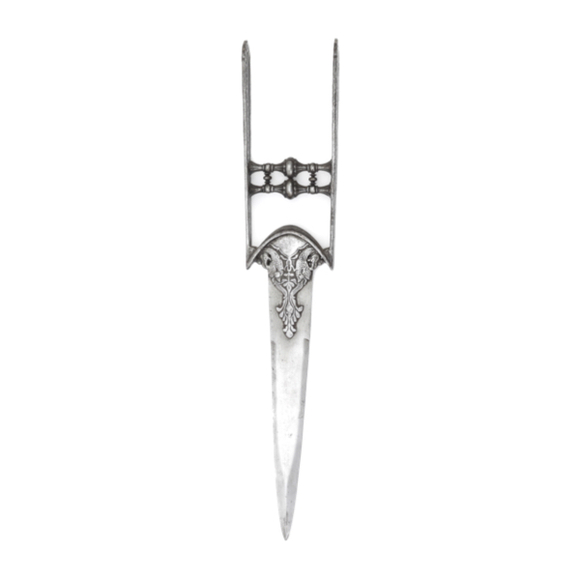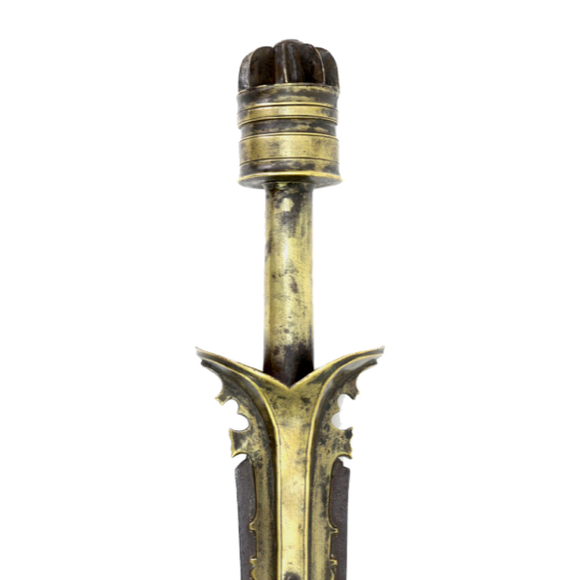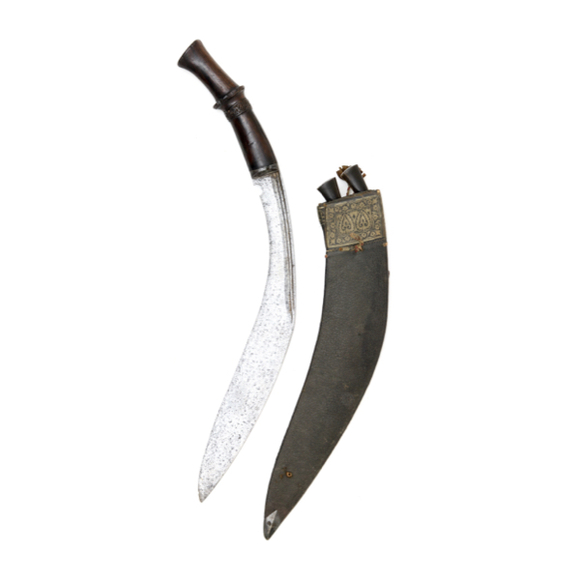Of a style often associated with Tanjore, the seat of the Vijayanagara empire.

61 cm / 24 inch
45.8 cm / 18 inch
Forte 62 mm
middle 38 mm
Forte 3 mm
middle 3 mm
thickened tip 5.5 mm
714 grams
This katar has been sold.
The Vijayanagara katar
The Vijayanagara Empire originated in south India from attempts of several smaller Hindu kingdoms to resist the Muslim invasion from the north. Founded in 1336, its capital was the city of Vijayanagara, which at it's height was after Beijing the second largest city in the world with an estimated population of half a million people. It was overrun by the Deccan Sultanates in 1565, the start of a gradual decline of the empire that lead to its fall in 1646. Many Vijayanagara arms in Western collections today were found in the Tanjore armory, the contents of which were sold by the British in the 1860's.
One of the most characteristic weapons of the Vijayanagara are the push daggers or katara, after the Tamil kaţţāri, a weapon best known in the western world under the English romanisation "katar". The Vijayanagara examples are believed to be the earliest forms of this characteristic Indian weapon. The typically have rather long blades and a shield-like guard incorporated into the handle.
Description
A classic Vijayanagara katar of the 16th century with long strongly tapering blade with multiple grooves. The grooves are very well-cut, and the ridges that separate them are precise and crisp. The blade is held by two large langets of a spectacular, almost futuristic design. The elements are probably highly stylized palmate elements or otherwise references to birds, the double parakeets often seen on south Indian arms.
The shield is of a thick, solid steel with a thick and deep patina on the inside and a cleaner, lightly pitted outside. It is reinforced on the outside with extra plates with decorative serrated edges. I love the little details on this piece, like the fact that even the serrations follow a specific design. It's not just a simple zig-zag line we see. At the very end of the shield is a finial in the shape of a stylized monster's head, possibly and abstract yali.
The front "wall" of the shield from which the langets that hold the blade project has a cusped profile. From a functional perspective, it strengthens and stiffens the piece and provides a stronger base for the langets. The cusping further increases the surface to which the langets are soldered. These cupped profiles are also common on early south Indian architecture.

'Facade on the W. Side of the Nayakar Durbar Hill' in Thanjavur (formerly Tanjore).
From the photograph album by Capt. Linnaeus Tripe,
'Photographic Views in Tanjore and Trivady'.
South India, 1858.
He writes: "‘This fine quadrangle is the most pure and perfect specimen of the Nayakar architecture to be found. Similar buildings in Madura betray the influence of Italian artists: this is purely native. When thronged with the warlike followers of the Nayakar, the king enthroned on the splendid granite slab now occupied by the statue of one of the greatest of the Mahratta kings, the scene must have been sufficiently striking.’"
Victoria & Albert Museum accession number IS.42:6-1889.
Notes on dating
These Vijayanagara hooded katar emerged in the mid 16th century and were only used in a fairly brief period. Their shapes started to change by the late 16th century with more drastic changes over the course of the 17th century. By the mid 17th century, they lost their characteristic hoods. Some of the first examples are seen on statues in the Ranganatha Temple of this period, which are largely identical to the example offered here. It is safe to say that this piece most likely dates from the mid to late 16th century.1
Comparable examples
There is a comparable hooded katar in the Metropolitan Museum in New York, accession number 36.25.905.
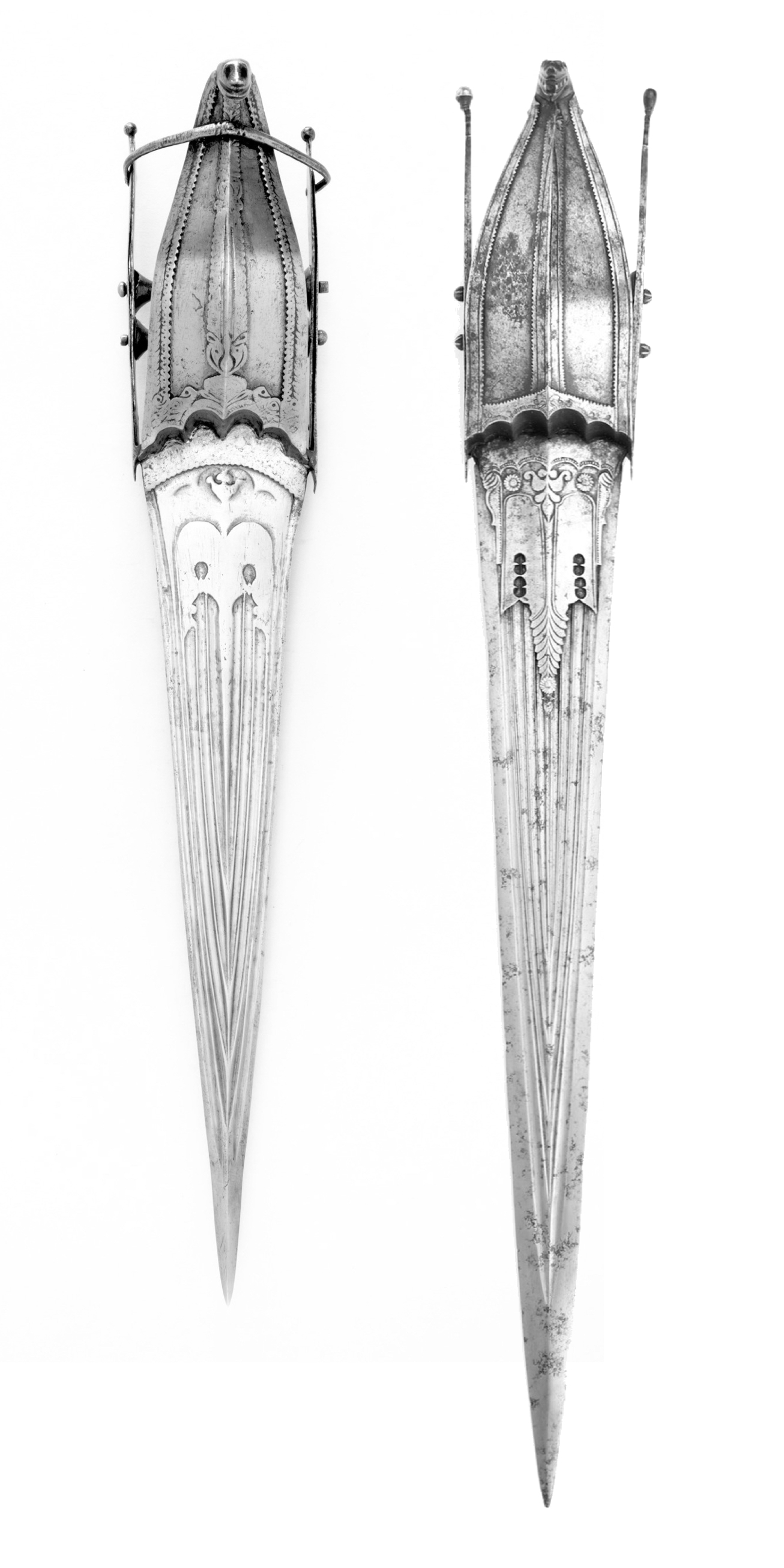
Left: Metropolitan Museum accession number 36.25.905. Ex. Stone Collection.
Right: Our katar.
The wonderful Metropolitan Museum example is somewhat smaller than ours. Its handle has an additional strap going over the shield, a feature seen on a number of surviving examples. Where the blade on our katar is held between two steel plates, on the Metropolitan Museum example the blade seems attached directly to the shield, with the general shape of our plates, that I call "langets" for lack of a better term, is engraved.
Condition
In very good condition, considering its probably almost 500 years old. No loose parts, most of the engraving remains. There are two finials at the end of the sidebars, one has lost its silver cap. Light pitting overall, a bit heavier on the right side of the shield. Blade in excellent condition, with crisp lines and only minor pitting. Some minor edge damage.
Conclusion
A very rare Vijayanagara katar of the 16th century. Well-made, with lots of interesting details, that was kept in an excellent state of preservation. A rare chance to own one of the best examples of its kind on the market.
Notes
1. See Elgood, Hindu arms and Ritual, Eburon Publishers, Delft. Pages 145-150.
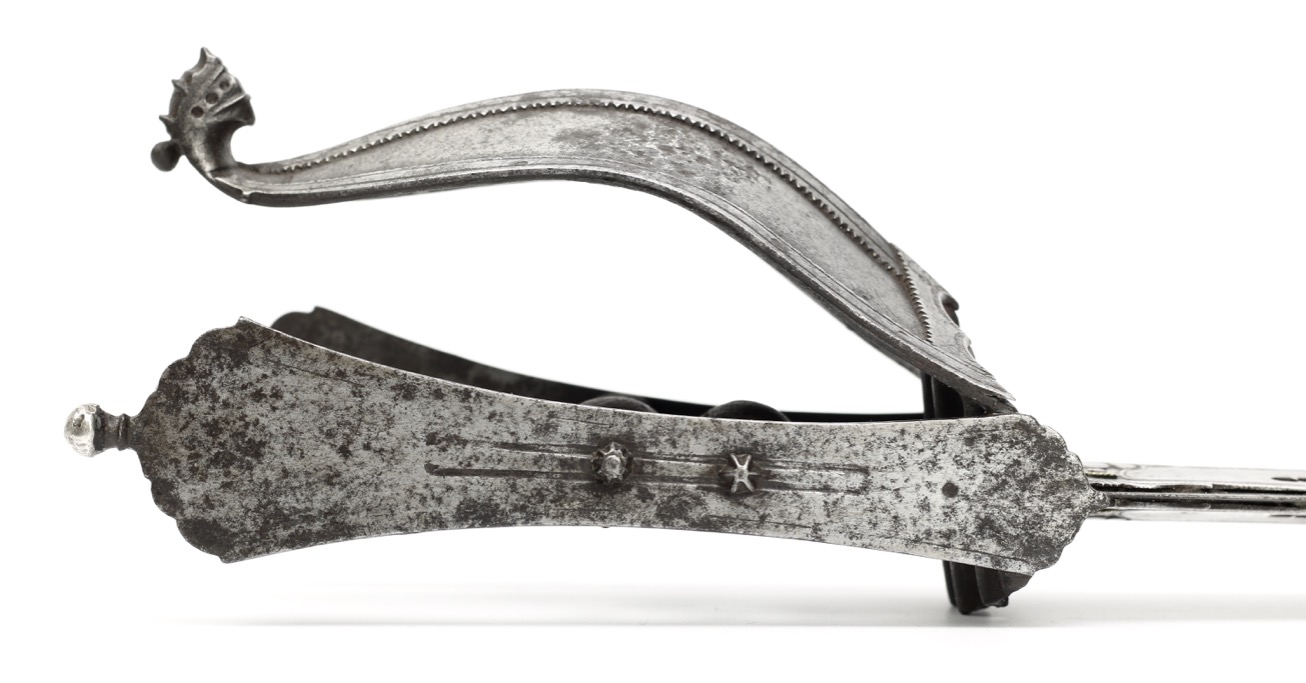

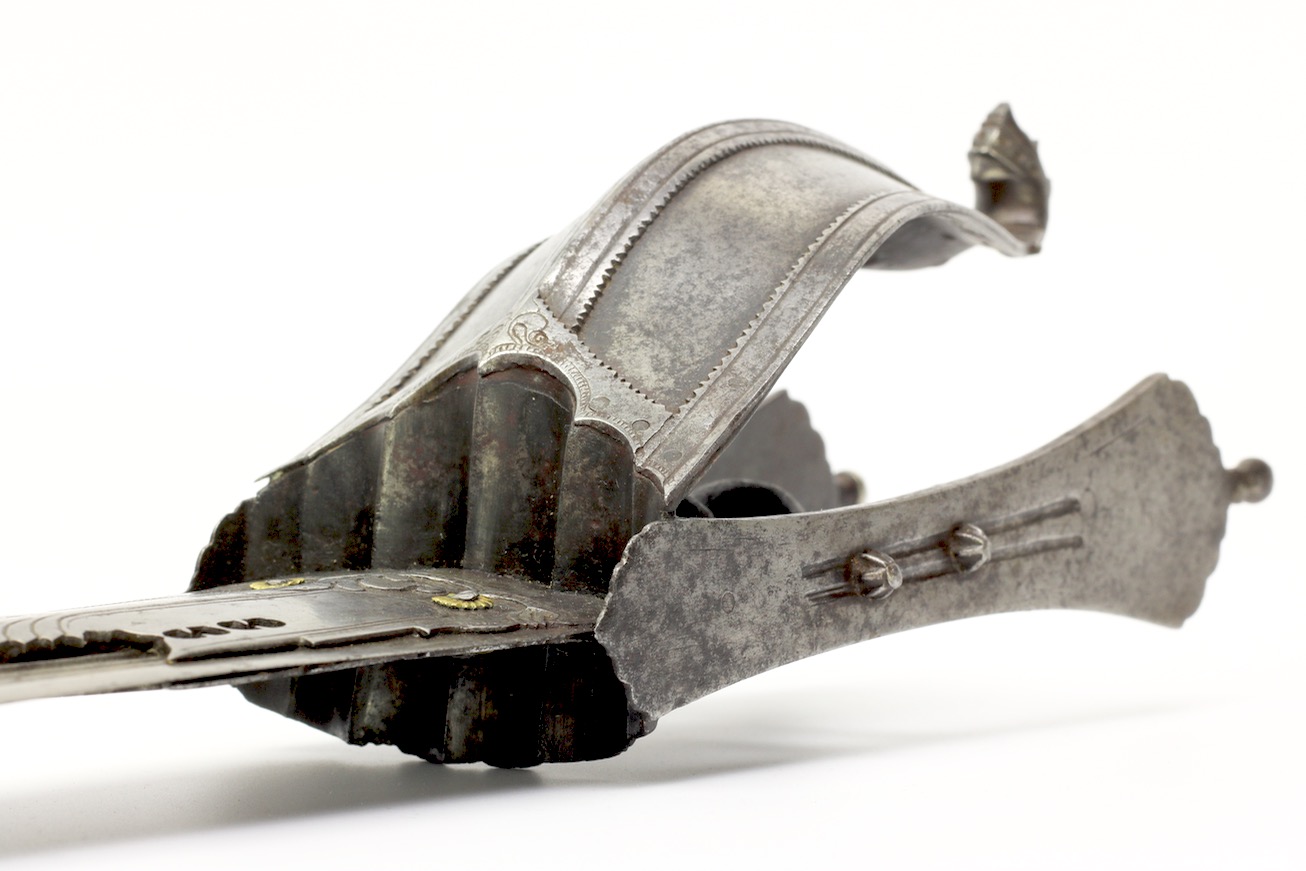
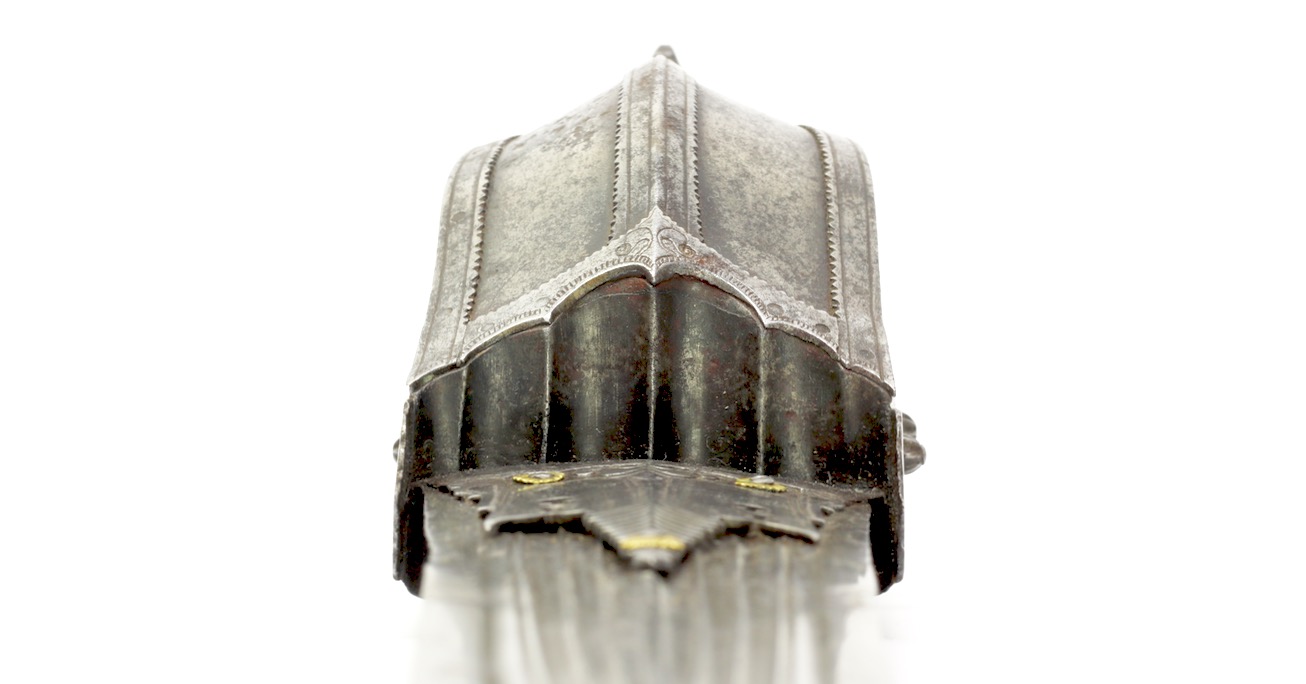
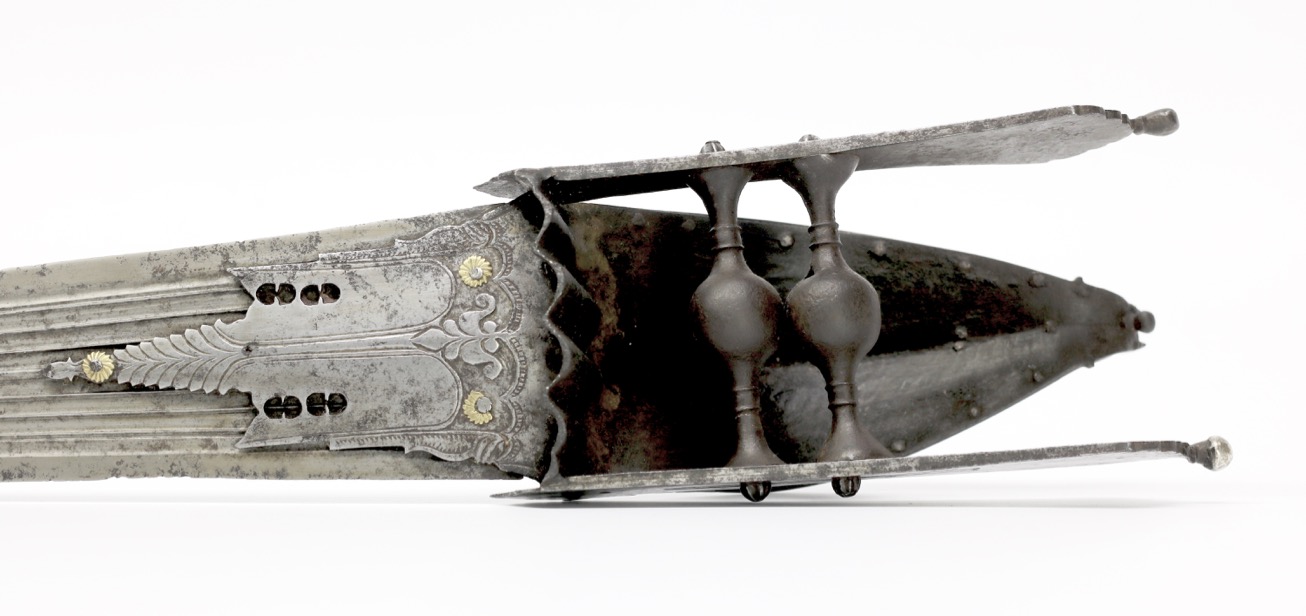







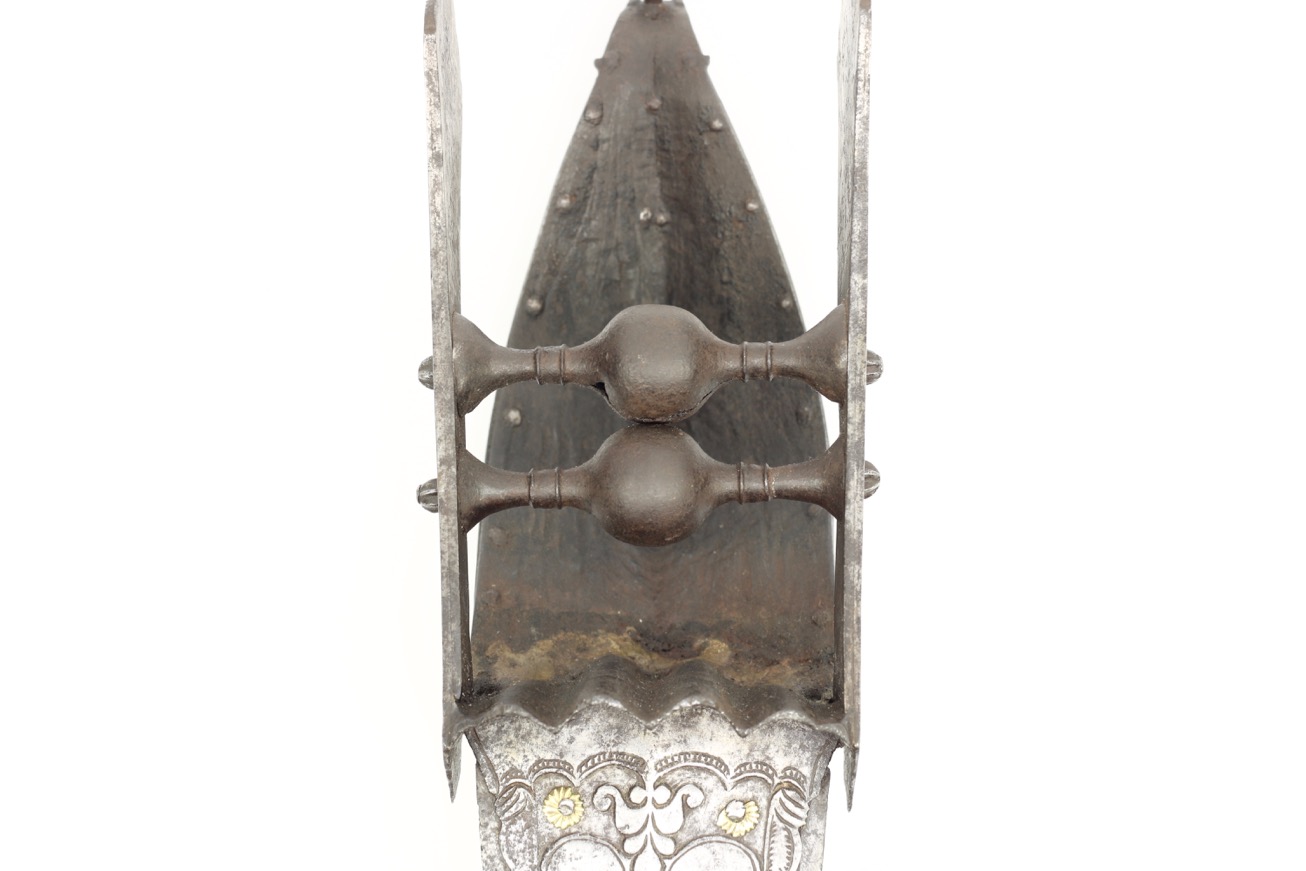
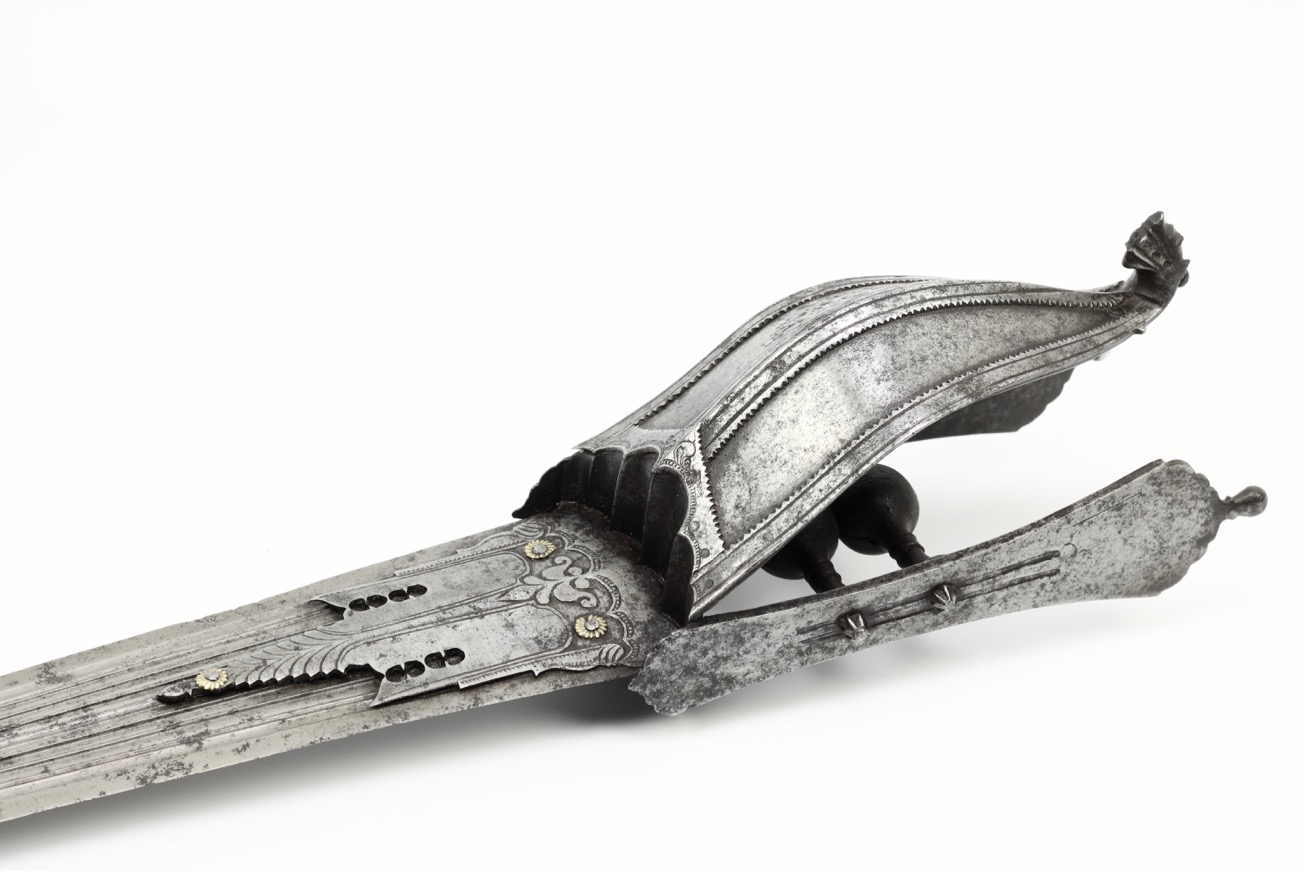
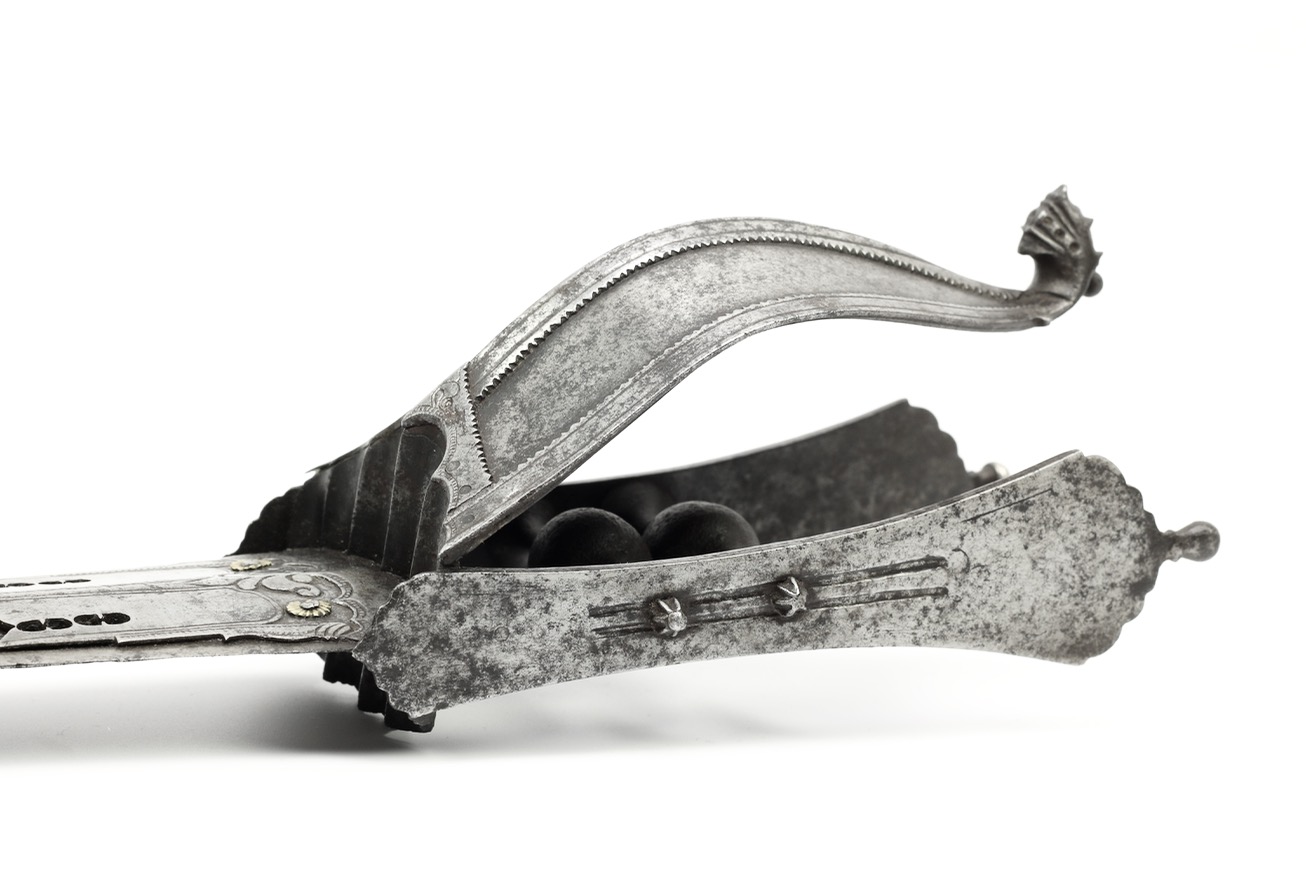
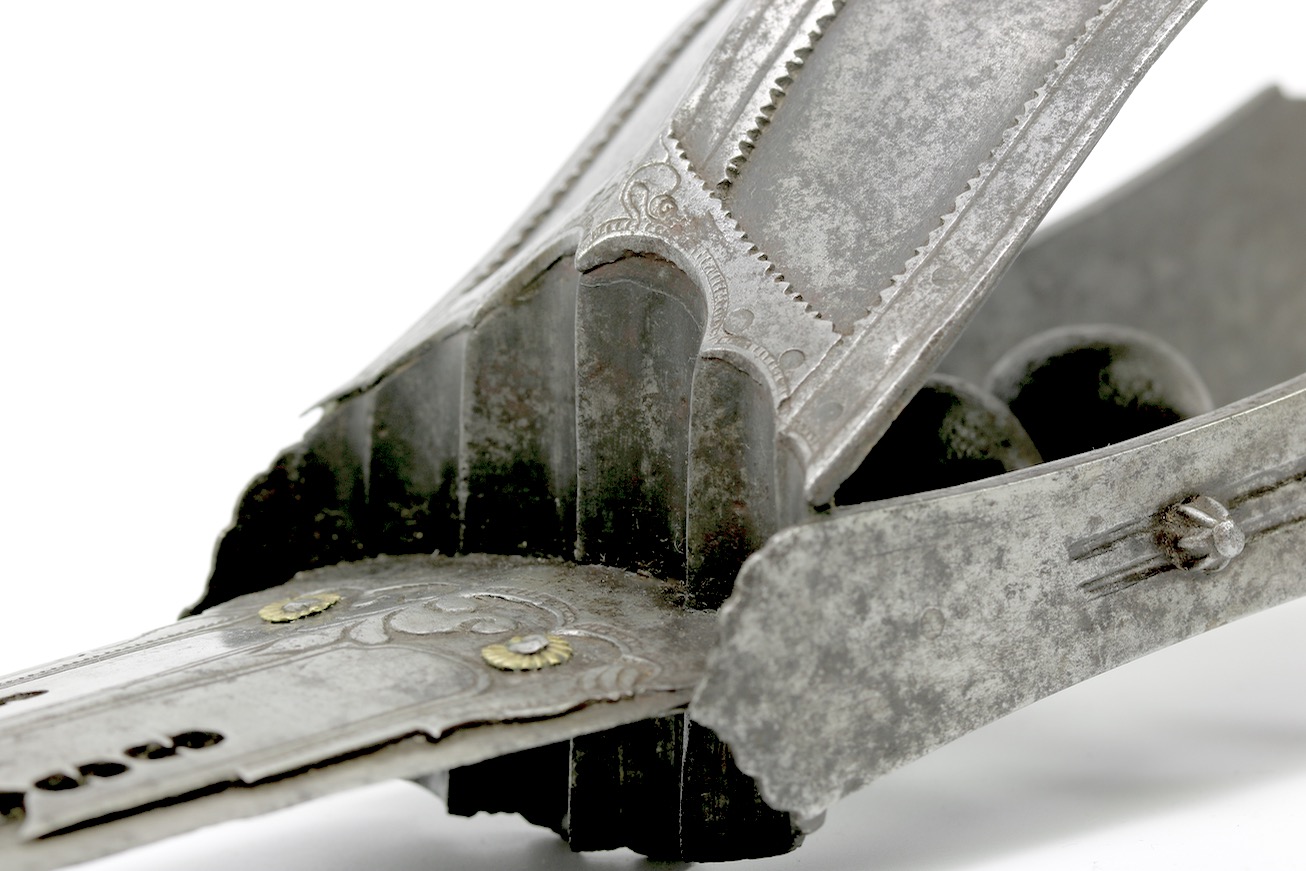







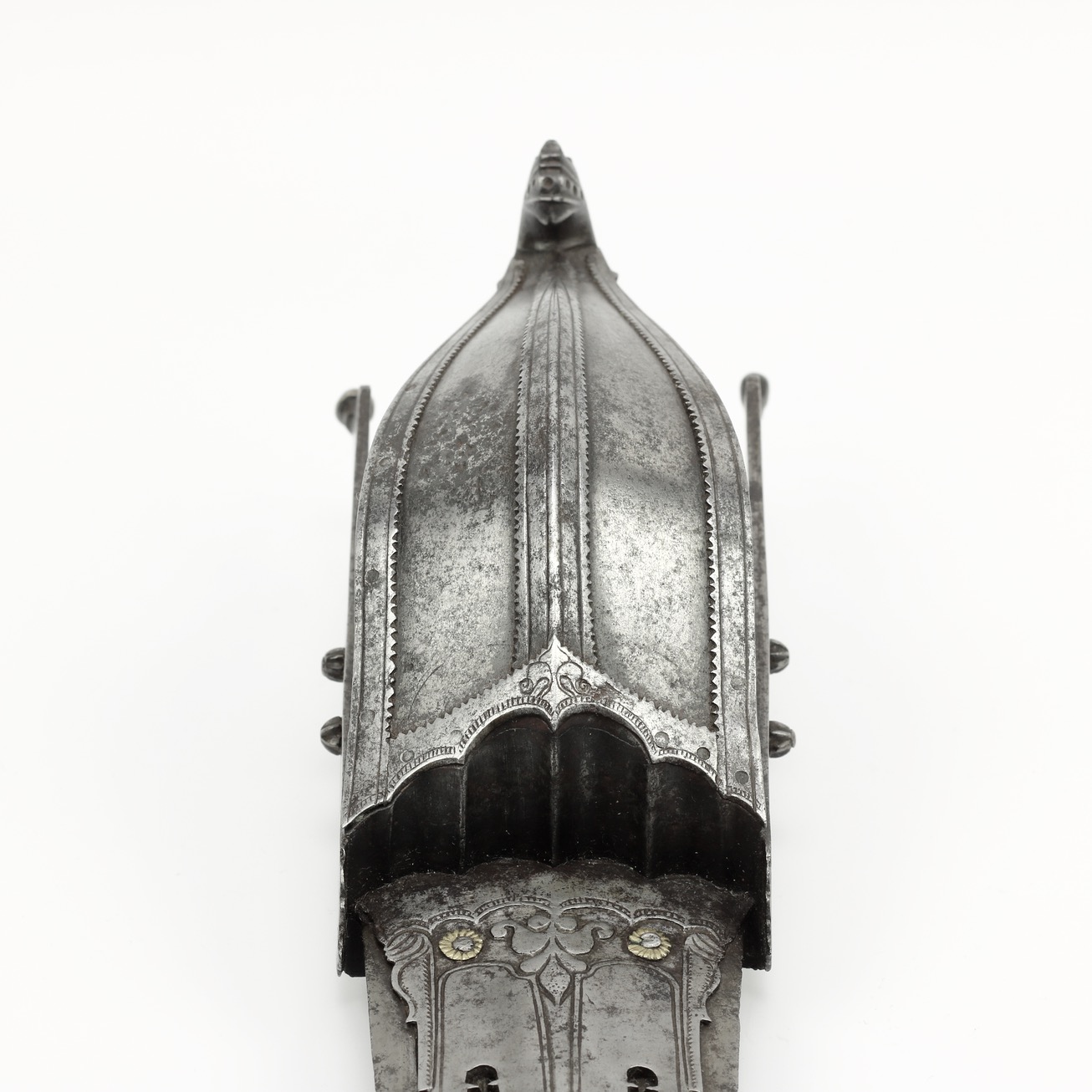
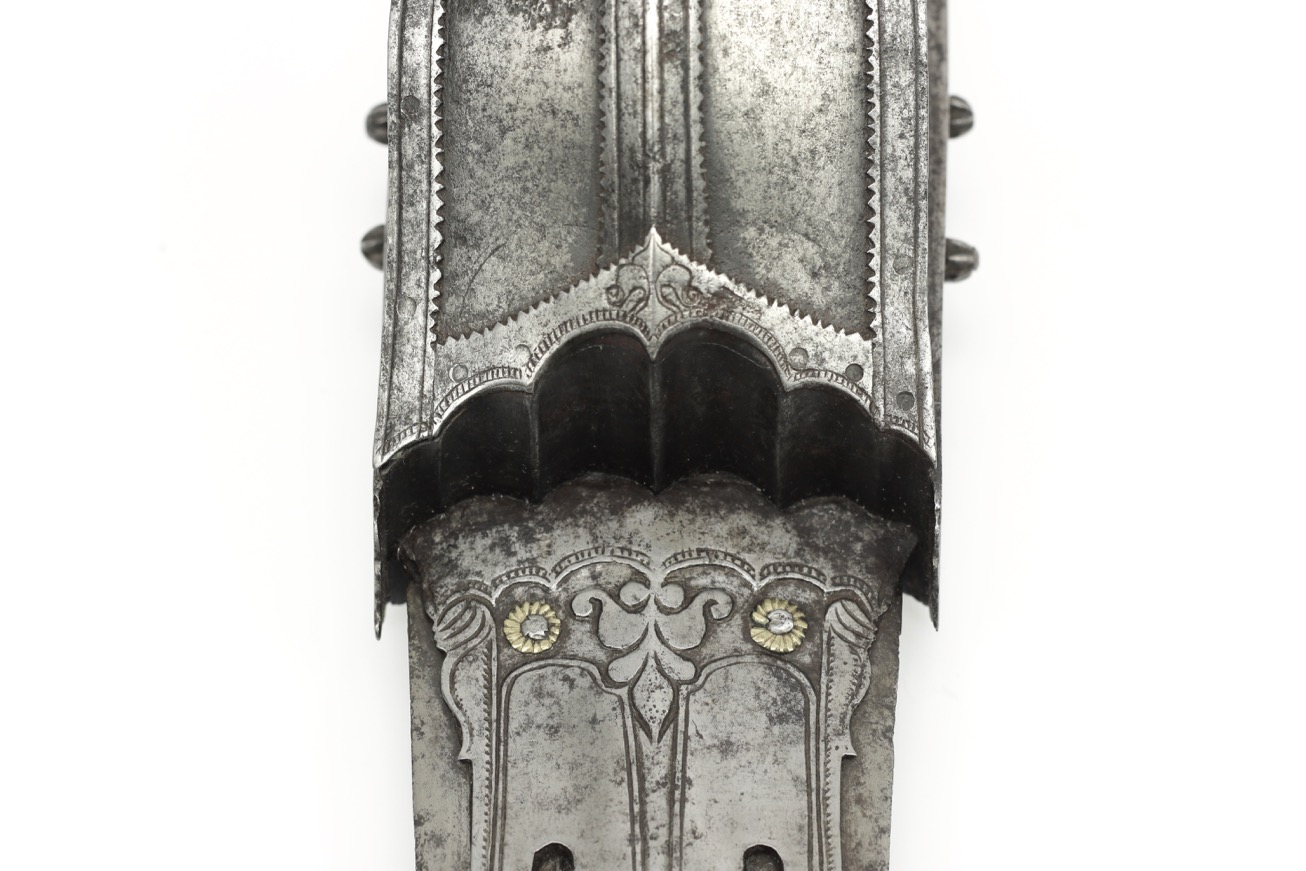
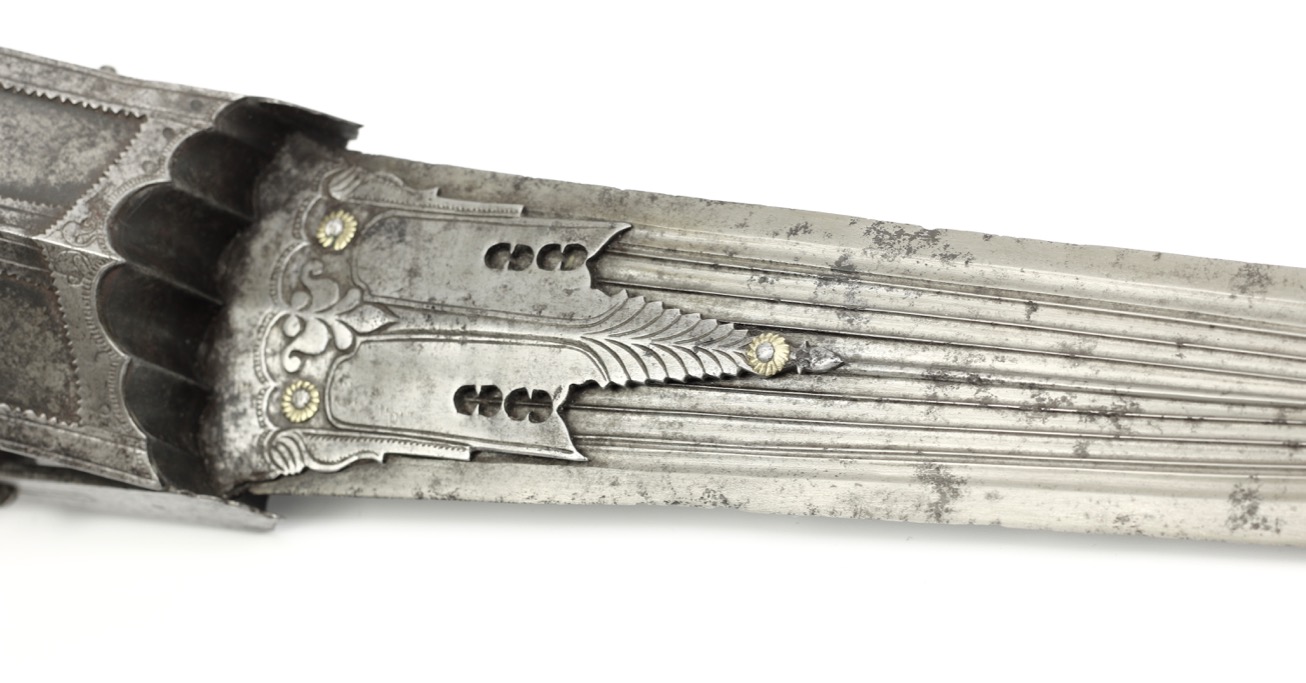
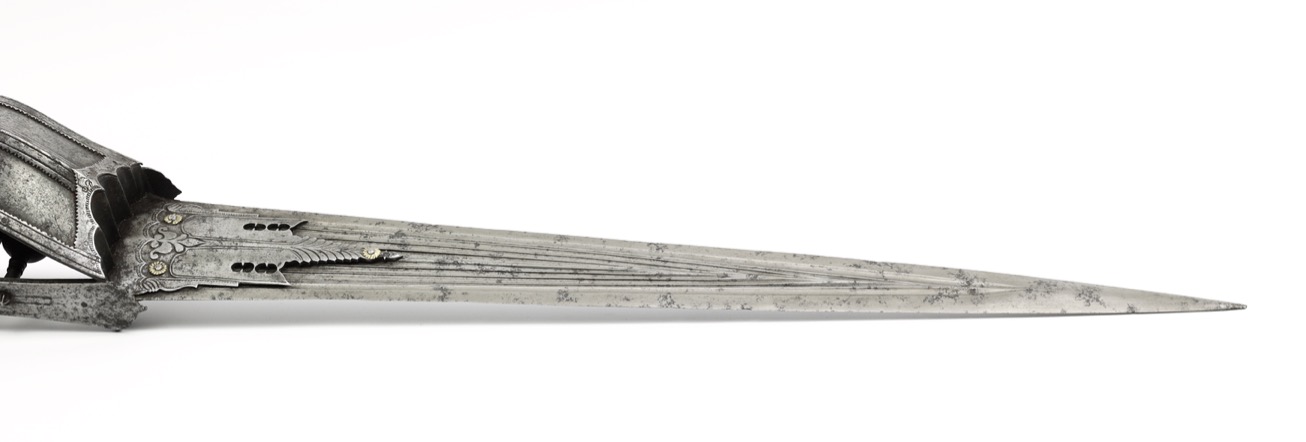
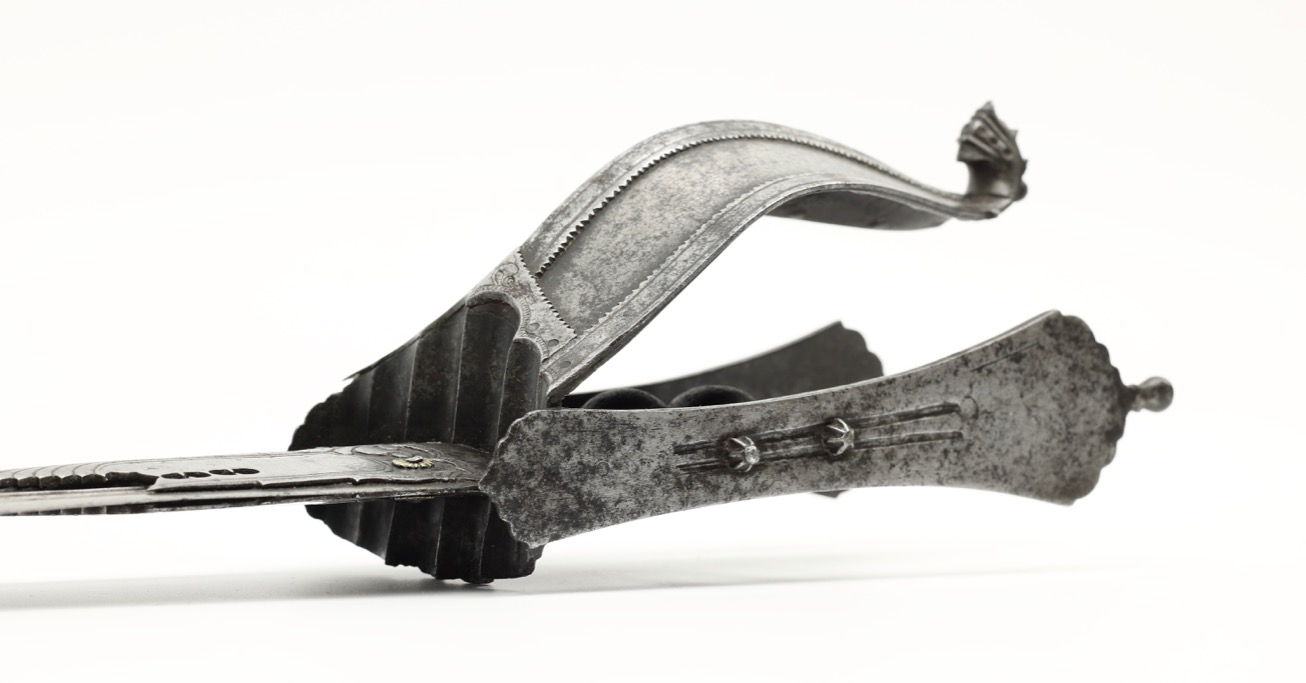
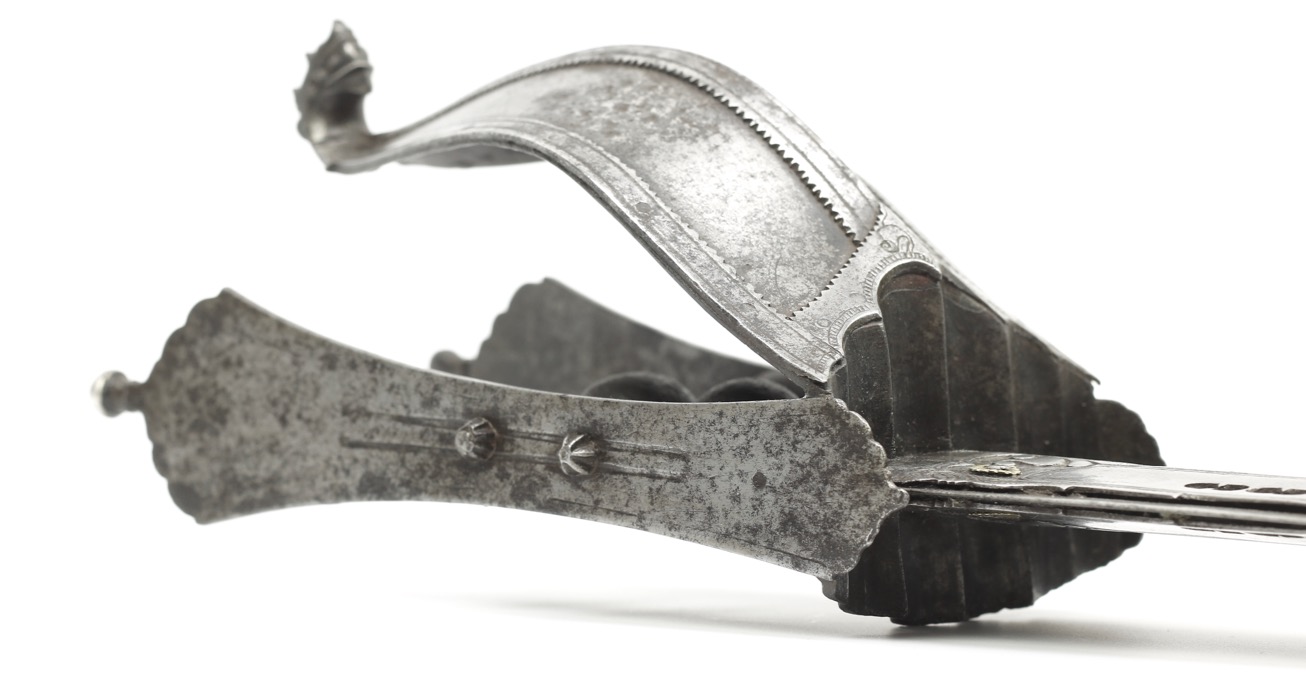
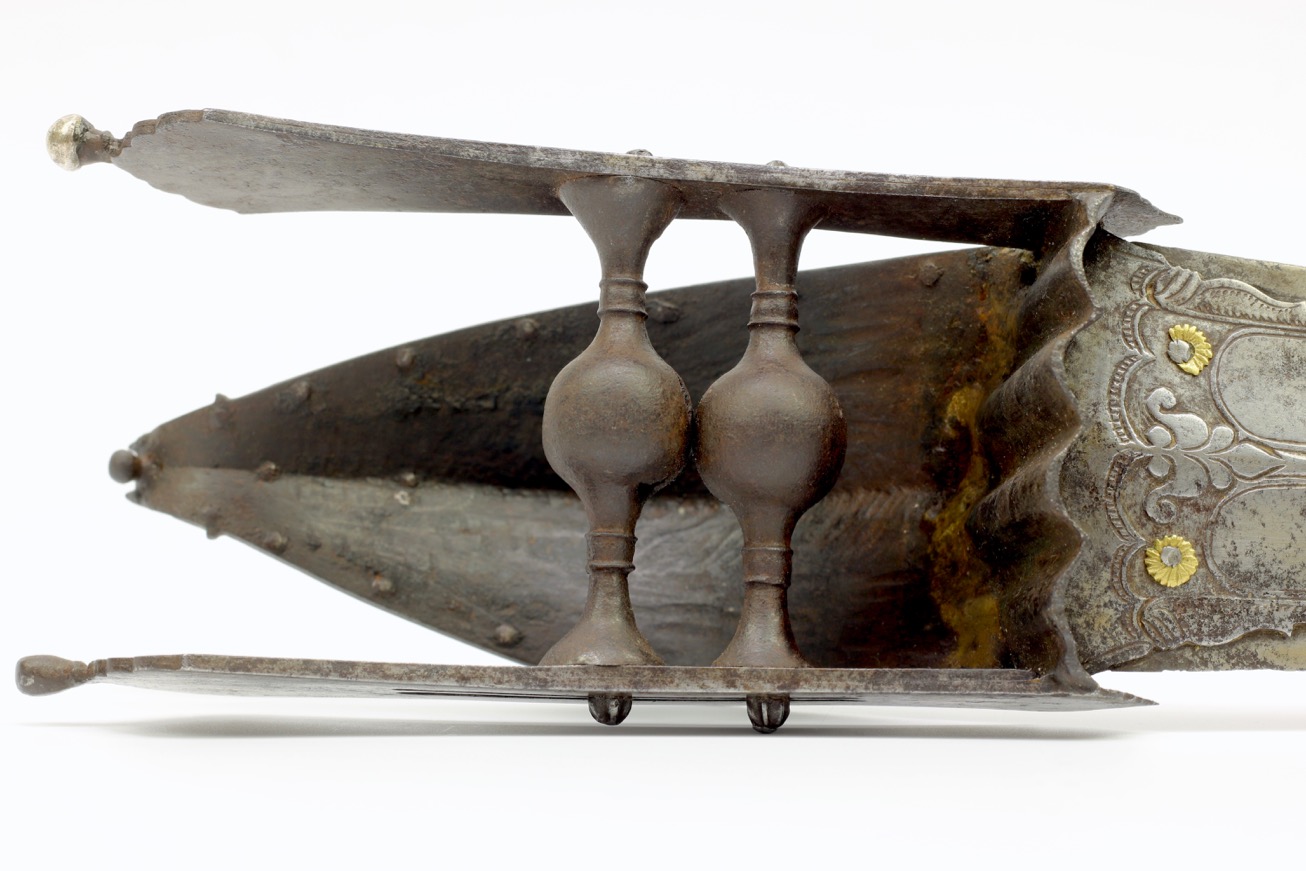


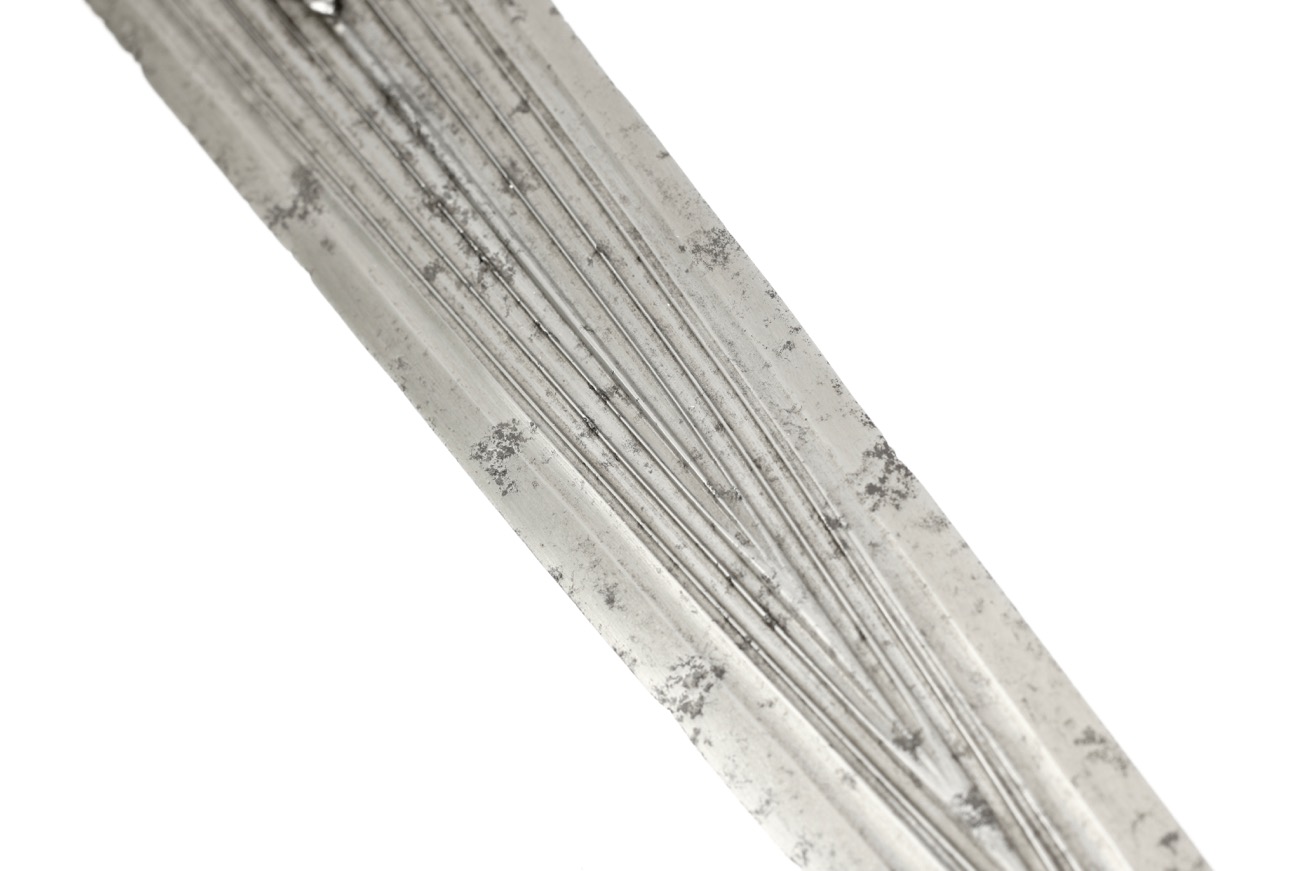

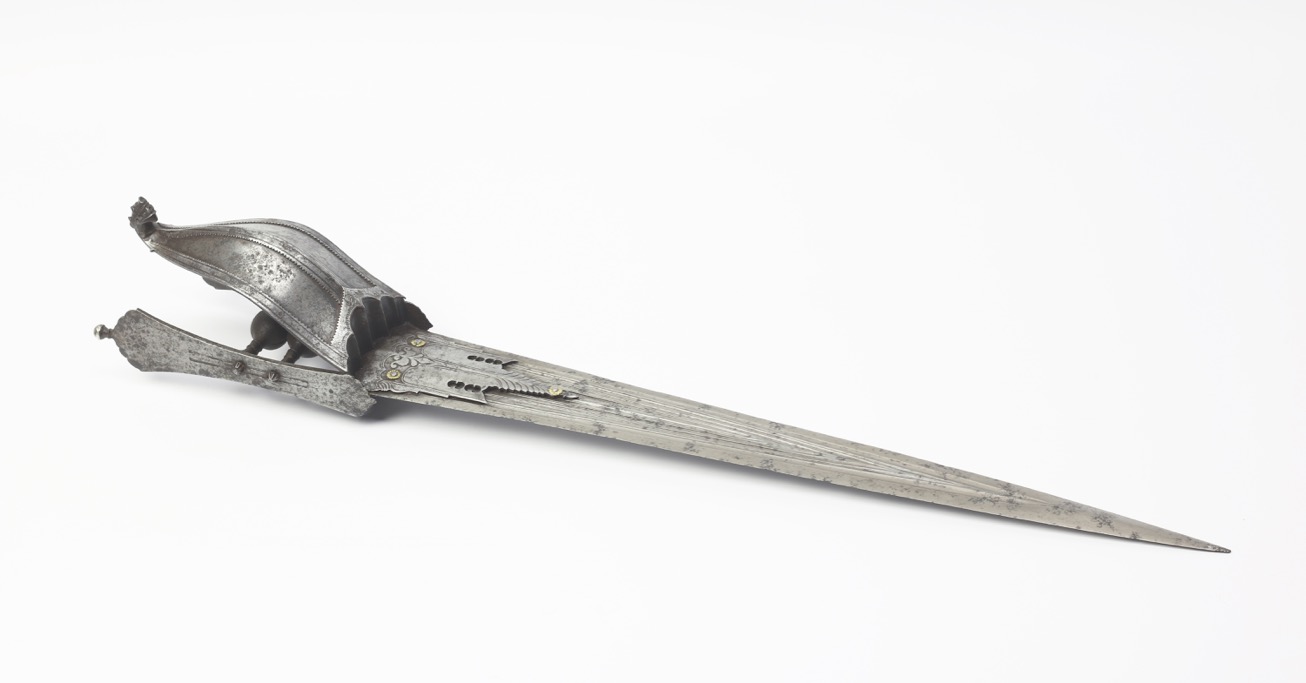

An early fighting piece with strong reinforcing langet and broad, cobra shaped tip.
With a very fine Nepalese blade, but kard-like hilt and scabbard.
Early type with very shallow notch in the blade and little flare in the pommel.

